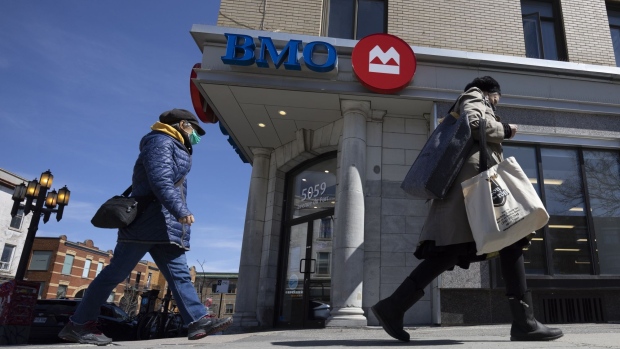May 27, 2022
Banks See Strong Corporate Borrowing in Canada Despite Inflation
, Bloomberg News

(Bloomberg) -- The risk of stagflation isn’t causing companies to pull back on investment yet, according to the finance chiefs of some of the Canada’s largest banks.
“They are ramping up inventories and investing in their businesses. And that’s what’s driving the increased borrowing, whether that’s increasing utilization of lines, which we are seeing, or new borrowing with existing and new clients,” Hratch Panossian, chief financial officer of Canadian Imperial Bank of Commerce, said in an interview. “Everybody is aware of the environment and some of the fluidity around it, but sentiment generally remains positive.”
Business loan balances in CIBC’s Canadian commercial banking and wealth management division rose 22% in the quarter ended April 30 from a year earlier, climbing to C$83.8 billion ($65.8 billion).
The proportion of small companies that see the general business situation as “good” rose to 42.6% in May from 37.8% in April, according to a barometer released Thursday by the Canadian Federation of Independent Business. The percentage of business owners who plan to increase staff is also rising -- though the CFIB survey also showed a few hints of trouble, including widespread labor shortages.
The overall mood of optimism comes despite inflation that has risen to its highest level since 1991, putting pressure on the Bank of Canada to boost interest rates swiftly. The central bank is expected to lift its key policy rate by 50 basis points to 1.5% on June 1.
Read more: In 2007 Redux, Canada’s Oil Heartland Is Running Ferociously Hot
“Nothing suggests to us today that we will be entering a significantly more stressful period here,” Bank of Montreal Chief Financial Officer Tayfun Tuzun said in an interview. While the lender regularly runs stress tests on its borrowers, “the nature of some of those stress tests has changed. Like today, for example, higher inflation scenarios are part of our stress test applications.”
‘Strong Balance Sheets’
Borrowers’ resilience is crucial for Canada given the high overall level of debt in companies and households. Total credit to the country’s non-financial sector was 343% of gross domestic product in the third quarter of last year, compared with 281% in the US and an average of 292% for advanced economies, according to data compiled by the Bank for International Settlements.
“There has been a lot of conversation about, could there be a recession. We are not in that camp for Canada. We are not in that camp for the US,” Bank of Nova Scotia’s Chief Financial Officer Raj Viswanathan said. “We see very strong balance sheets with corporates, as well as consumers.”
Scotiabank’s government and business loan balances in Canada rose to C$72.7 billion in the second quarter, up 19% from a year earlier.
While stress tests aren’t flashing red lights, the level of defaults is likely to increase over time, BMO’s Tuzun said.
“The impaired provision metrics that you are seeing today in the banking industry are at very, very low levels. And they’re not sustainable,” he said. “But the normalization will not happen overnight. It will be a couple of quarters before we see any signs of normalization.”
©2022 Bloomberg L.P.


